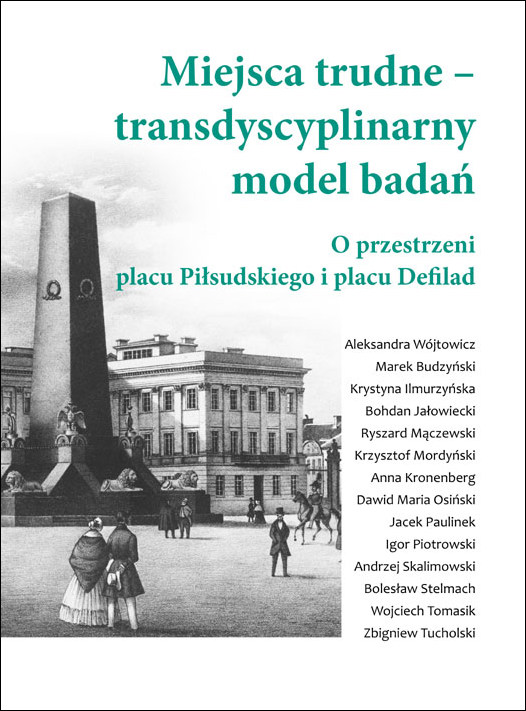Aleksandra Wójtowicz, Marek Budzyński, Krystyna Ilmurzyńska, Bohdan Jałowiecki, Ryszard Mączewski, Krzysztof Mordyński, Anna Kronenberg, Dawid Maria Osiński,
Jacek Paulinek, Igor Piotrowski, Andrzej Skalimowski, Bolesław Stelmach,
Wojciech Tomasik, Zbigniew Tucholski
Difficult places — transdisciplinary research model. On the space of the Piłsudskiego and Defilad Squares
under Aleksandra Wójtowicz’s academic supervision
Warsaw: Publisher ILR PAS (Wydawnictwo Instytutu Badań Literackich PAN), 2019

Reviewers: dr hab. Mikołaj Madurowicz, dr hab. Andrzej Leśniak, prof. IBL PAN
Cover desing: Jacek Wardęcki
Editing: Magdalena Szczepańska
Proof-reading: Tomasz Ostromęcki
Printing: PLATAN, Liszki
The 14-person transdisciplinary research group examined two Warsaw squares regarded as the most important and largest in the city. At the same time the squares are places about which, despite numerous architectural competitions, no final decisions concerning their development have been made for decades. The actions undertaken resulted in the collective book which is neither exclusively about the space of Piłsudskiego Square and Defilad Square nor about squares in general. Instead, it is a book about how to study such places. It proposes a research model combining cognitive models and methodologies of researchers who deal with exactly the same topic. In terms of its content and layout the volume bases on an attempt to transplant the fugue’s genre characteristics onto the model of the thesis so as to show, through polyphony, harmony, and counterpoints, the emergence of the transdisciplinary model in the course of interdisciplinary work.
An important thing was to pinpoint the characteristics of the areas studied — the distinguishing features which are the reason why their development has posed problems. Places of this type are called ‘difficult places’, with this difficulty encompassing various aspects which enter the sphere of both physical and represented space. Importantly, many phenomena are situated on the border between them. It is not an analysis of space but of s p a c e – t i m e and the factors which determine the interrelation between stability and dynamism. The essence of the research — and this statement is a result of not theoretical assumptions but empirical experiences — is fluctuation of conceptions, their mutual dependency and interaction, and also a transformation of one conception into another, and not an attempt to create a common dictionary.
The research model developed can be used, transformed, and developed by other transdisciplinary research groups studying places of similar specificity.